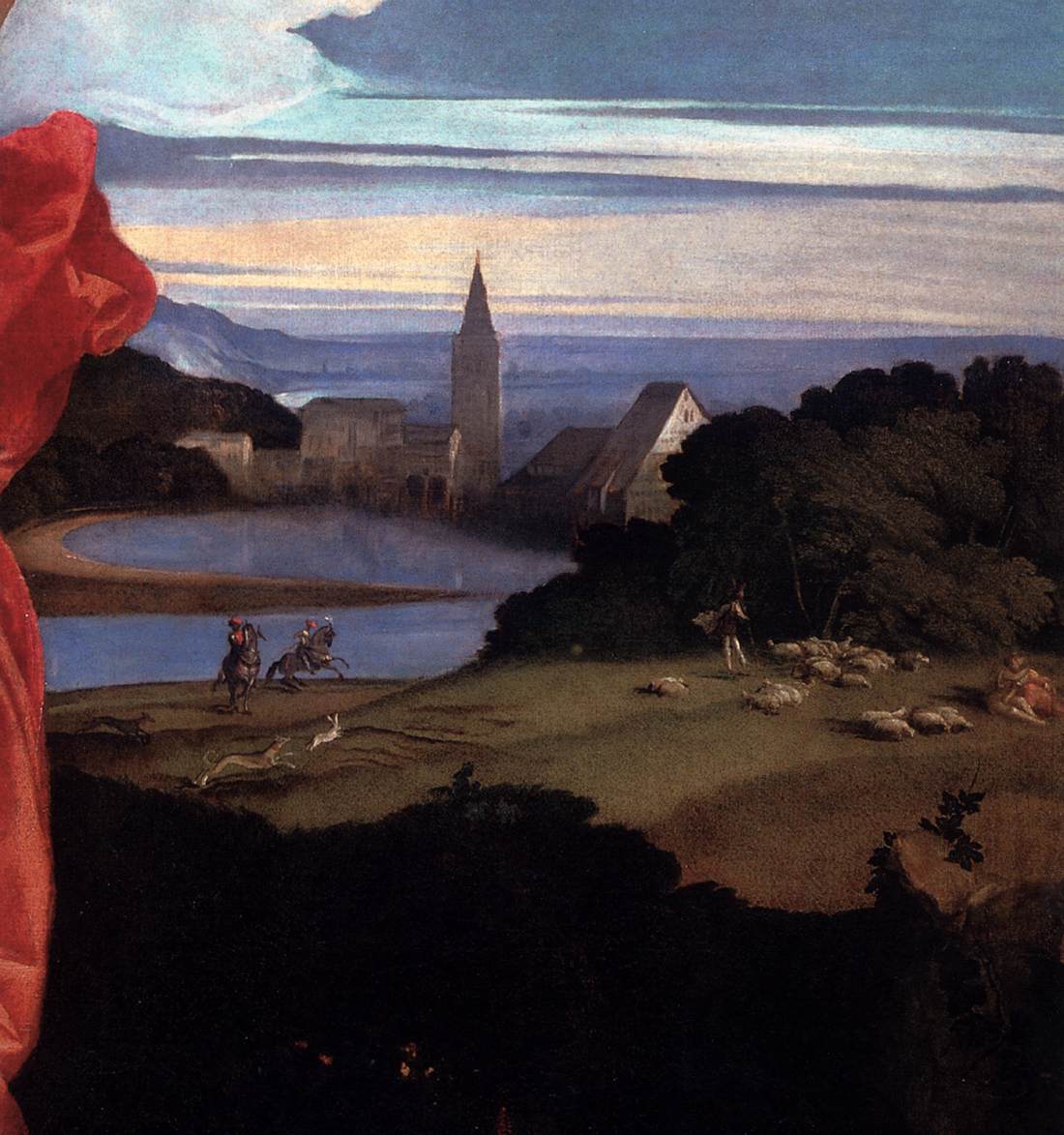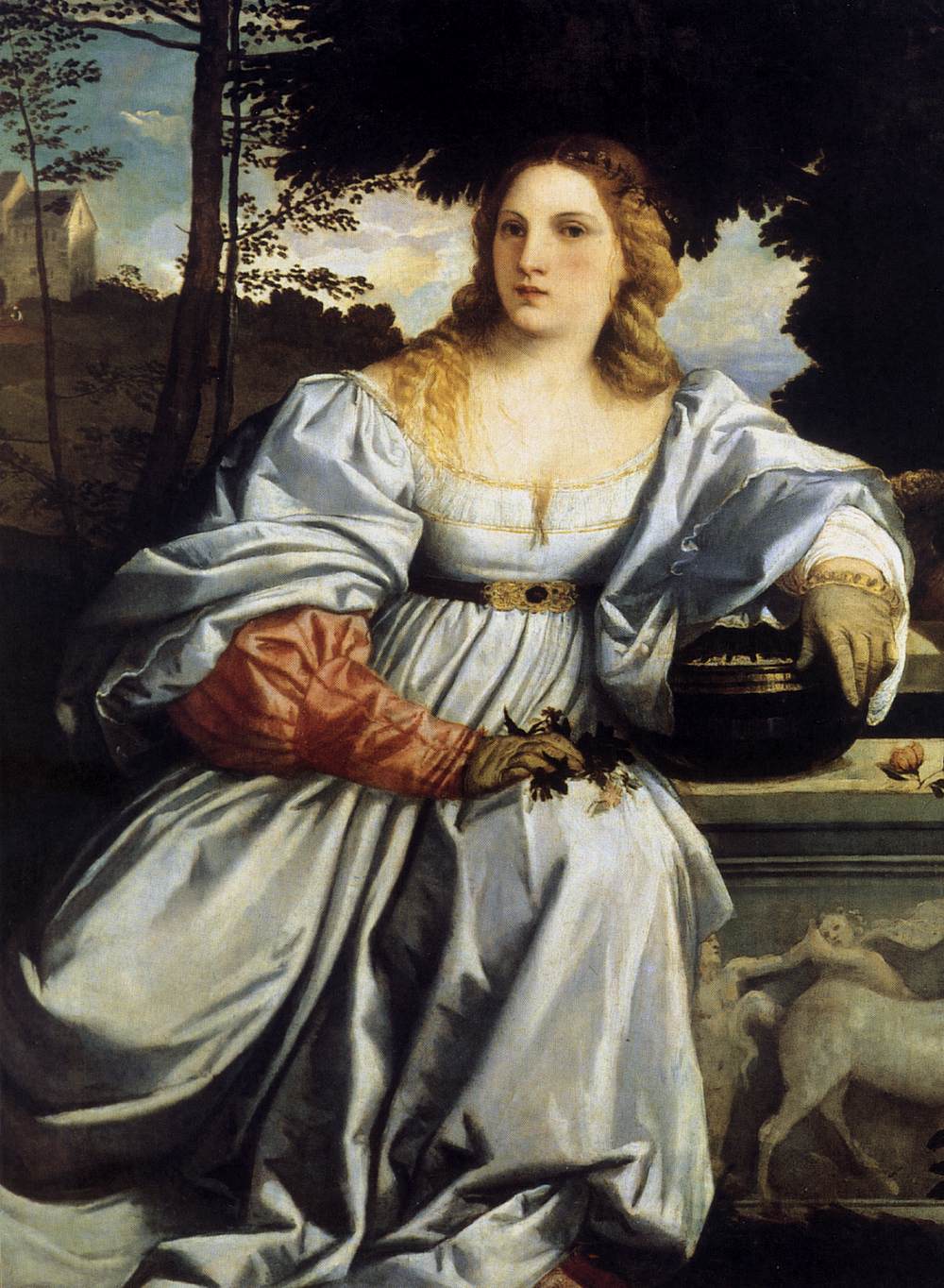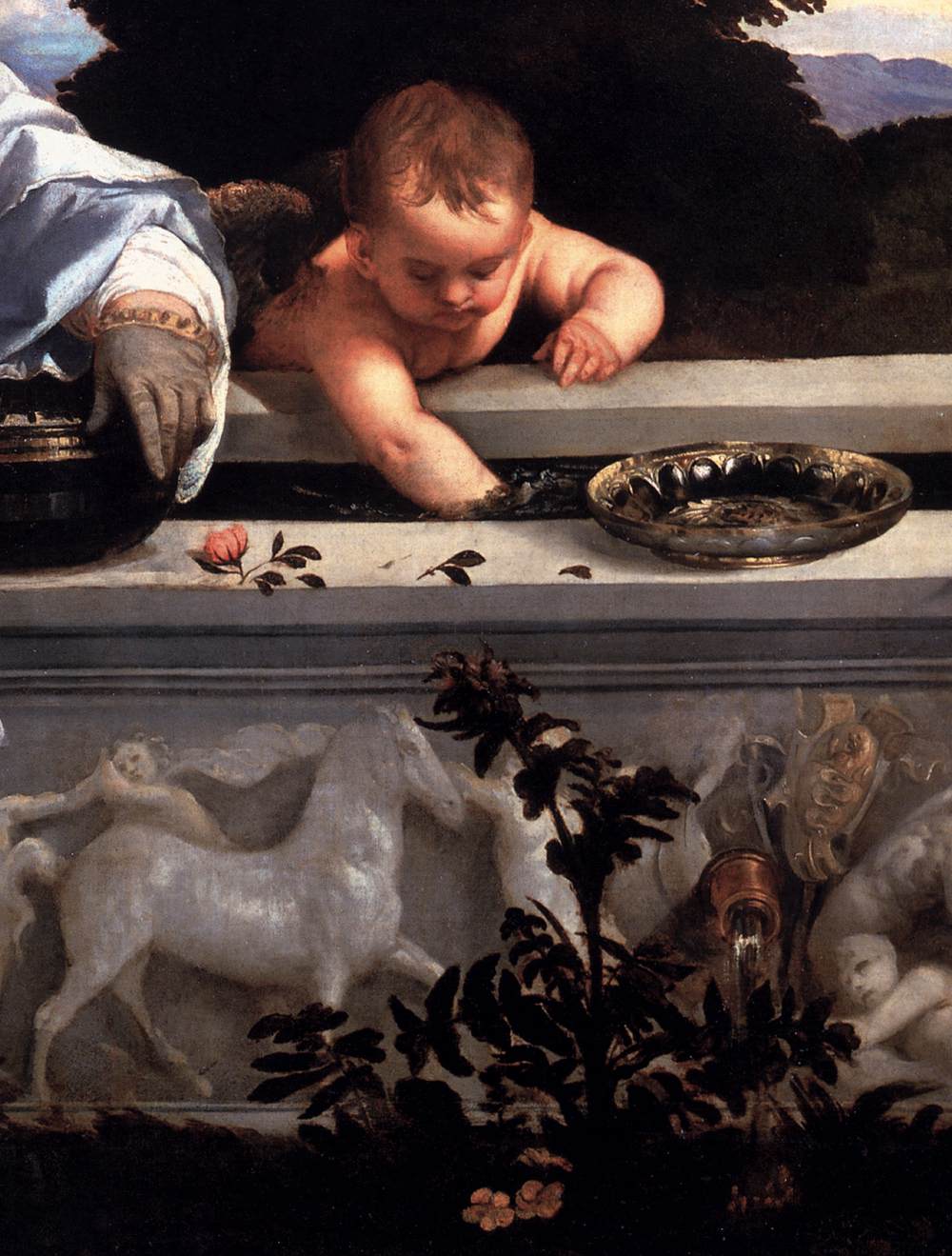
Titian’s Sacred and Profane Love: Hidden Secrets and Symbolism
June 26, 2023
Titian’s Sacred and Profane Love is the gem of Rome’s Borghese Gallery… and one of the most famous paintings of Italian Renaissance art. Perhaps the painting – also known as Amore Sacro e Amor Profano – is so famous simply because of its beauty and because it’s a masterpiece by the Renaissance great Titian.
Or perhaps people have fallen in love with it because of its hidden secrets and symbolism—much of which art historians still don’t completely understand!

Titian’s Sacred and Profane Love is a beautiful and hauntingly mysterious painting.
The painting is so beloved, in fact, that in 1899, the Rothschild family offered to pay the Borghese Gallery 4 million lira for the piece—even though the gallery’s entire collection, and the grounds, were valued at only 3.6 million lira!
Table of Contents
ToggleAn artwork shrouded in mystery
There’s a lot of mysterious stuff going on here. At first glance, the painting might just look like another portrait of two lovely ladies, with a pastoral background behind them.
Look again.
The masterpiece at first glance
First of all, there are the women themselves. One is clothed, bejeweled, and—seemingly—made up with cosmetics. She’s wearing gloves, and holding a plant of some kind. The other is (almost) stark naked, holding just a torch.
Then look at what they’re sitting on. That’s no carved-marble bench – that’s a sarcophagus. In other words, a coffin, of the type the ancient Romans used.
And it’s a strange sarcophagus, because it appears to be filled with water, which a cherubic baby is swirling.
Look even closer, and you can see a spout in the sarcophagus’ front, which the water is pouring out of and, seemingly, watering a growing plant below.
In the background, meanwhile, you have some other strange things going on: On our left, a horse and rider race up a mountaintop to a looming fortress, while two hares appear to be playing (or chasing each other); on our right, shepherds herd sheep in a pasture in front of a picturesque church, while a dog chases a hare.
Nothing that’s here is here by mistake. So what does it all mean?
Symbols and hidden meanings
We’re not sure. We have to rely on our knowledge of the painting’s symbols and hidden meanings to find out. And that’s because…
We don’t even know the real title of one of the most famous paintings in Europe
Although the piece is called Sacred and Profane Love, that’s not its original name. In fact, we don’t know what its original name was.
Here’s what we do know: Titian painted the piece in 1513-1514, at the age of just 25. And it was commissioned to celebrate the marriage of Niccoló Aurelio, a secretary to the Council of Venice, to Laura Bagarotto. No name is listed in the records for the painting, but in 1693, almost 200 years after it was painted, it showed up in the Borghese Gallery’s inventory under the name Amor Divino e Amor Profano (“divine love and profane love”).
What is sacred, and what is profane?
For a long time, art historians thought that the painting was supposed to show two different kinds of love: the sacred, and the profane.
It’s definitely safe to say the painting is about love. Symbols of love are scattered throughout, from the roses on the sarcophagus to the myrtle the woman on our left clasps (more on that later!). And, of course, the painting was a marriage gift, which would make this focus highly appropriate.
But does it show sacred and profane love? Well, if so, that might explain the background. The fortress, symbol of war and humanity, could symbolize the profane (or worldly); the church would, obviously, symbolize the sacred.
And it could explain the two women. Perhaps one is meant to be a Venus showing what worldly love looks like; the other, a Venus showing us sacred love.
But the interesting question is, if this is true, then which of the two women represents sacred love, and which is the profane?
What we don’t see
At first glance, you might think the woman on our left represents sacred love. After all, she’s clothed! The other, naked one would, of course, represent worldly, amorous love.
Some aspects of each woman’s costume do back up that theory, because there are so many hidden symbolshere! For example, the clothed woman’s belt was generally considered a symbol of marital ties; and the myrtle in her hand symbolized the lasting happiness of marriage. On the other hand, the nude woman’s flame symbolized earthly lust.
But look again, and you see just as much symbolism pointing us in the opposite direction. For one thing, the clothed woman is seated, and therefore below—and closer to the earth than—her nude counterpart. She’s wearing gloves for falconry, or hunting, and holding a case of jewels, both signs of worldly pursuits. And she’s dressed very sumptuously (and not all that modestly!), with rich fabrics and even a touch of cosmetics.
But heavenly beauty doesn’t need any worldly adornment. The nude woman, therefore, might be sacred.
Alternative interpretations
Cupid unlocks the meaning
The key could be Cupid, mixing water in the sarcophagus. Of course, that’s no baby between the two depictions of love (in this interpretation, two versions of Venus, goddess of love, herself): it’s Cupid. By mixing the waters in the well/sarcophagus, he might be suggesting that the ideal love is, in fact, a mix of these two kinds.
Neither sacred, nor profane
What if the painting isn’t even about sacred and profane love?
In the 20th century, art historian Walter Friedländer argued that the painting wasn’t about these two types of love at all. He thought it showed Polia and Venere, two characters in Francesco Colonna’s popular 1499 romance Hypnerotomachia Poliphili (don’t worry, there won’t be a test on that name!).
Another interpretation that’s much more simple… and makes a lot of sense? The painting could show the bride, Laura Bagarotto, herself, dressed in virginal white on the left. And the nude woman on the right? She might be Venus, initiating Laura into what love is like—complete with showing her the passion that’s necessary to make a marriage work (the torch).
The bottom line is that no one is sure what this painting really means. There’s a lot going on here, that’s for sure. And it’s kept art historians interested—and arguing!—for centuries.
Update notice: This article was updated on June 21, 2023.
by Martina V.
View more by Martina ›Book a Tour

Pristine Sistine - The Chapel at its Best
€89
1794 reviews

Premium Colosseum Tour with Roman Forum Palatine Hill
€56
850 reviews

Pasta-Making Class: Cook, Dine Drink Wine with a Local Chef
€64
121 reviews

Crypts, Bones Catacombs: Underground Tour of Rome
€69
401 reviews

VIP Doge's Palace Secret Passages Tour
€79
18 reviews

Legendary Venice: St. Mark's Basilica, Terrace Doge's Palace
€69
286 reviews













